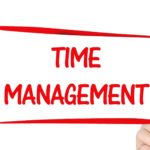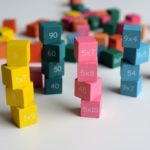Hello fellow teachers!
If you’re reading this, you’re probably looking for some guidance on how to create an effective lesson plan. And let me tell you, creating a lesson plan that is engaging, meaningful, and aligned with your objectives is key to a successful lesson. Not only will it help you stay organized and on track, but it will also help your students learn more effectively.
So, without further ado, let’s dive into the process of creating an effective lesson plan.
Getting Started
Before we get started, it’s important to understand the purpose of a lesson plan. A lesson plan is essentially a roadmap for your lesson. It outlines the objectives, materials, and activities you’ll use to help your students learn. By creating a lesson plan, you can ensure that your lesson is focused, well-organized, and aligned with your goals.
There are several benefits to creating an effective lesson plan. For one, it helps you stay focused and on track during the lesson. It also allows you to anticipate any potential challenges or roadblocks and come up with solutions ahead of time. Additionally, an effective lesson plan helps you differentiate instruction to meet the needs of all learners, including those with learning disabilities, English language learners, and gifted students.
Determine the objective of the lesson
The first step in creating an effective lesson plan is to determine the objective of the lesson. What specific knowledge, skills, or attitudes do you want your students to learn? Make sure the objective is clear and measurable so that you can determine whether or not your students have achieved it by the end of the lesson.
Suppose your objective is to teach your students about the solar system. In that case, you might write something like, “Students will be able to identify the eight planets in the solar system and describe their characteristics.” This objective is clear and measurable, as it specifies exactly what the students should be able to do by the end of the lesson.
Select appropriate materials and resources
Once you’ve determined the objective of the lesson, the next step is to select appropriate materials and resources. Choose materials that support the lesson objective and are appropriate for the age and ability level of your students. You might consider using a variety of materials, such as texts, videos, hands-on activities, and online resources.
If you’re teaching a lesson on the solar system, you might use a textbook, a video about the planets, a diagram of the solar system, and a hands-on activity where students create their own model of the solar system. By using a variety of materials, you can engage your students in different ways and help them learn more effectively.
Plan the structure of the lesson
Now that you’ve selected your materials and resources, it’s time to plan the structure of the lesson. Decide on the order in which you will present the material, and consider using a variety of teaching methods, such as lectures, demonstrations, group work, and discussion.
You might start your lesson on the solar system by introducing the concept with a brief lecture. Then, you might show a video about the planets to provide more information and engage your students visually. Next, you might have your students work in small groups to create their own models of the solar system. Finally, you may decide to wrap up the lesson with a whole-class discussion to review the key concepts.
Consider the needs of all learners
As you plan your lesson, it’s important to consider the needs of all learners. Differentiate instruction to meet the needs of all students, including those with learning disabilities, English language learners, and gifted students.
Maybe you have a student with a learning disability; you might provide additional support by breaking down the material into smaller chunks or providing visual aids. If you have an English language learner in your class, you might provide vocabulary lists or use visual aids to help them understand the material. And if you have gifted students, you might challenge them with advanced activities or allow them to explore the material more independently.
Plan for assessment
Once you’ve planned the structure of the lesson, it’s important to plan for assessment. Decide how you will measure student learning and progress toward the lesson objective. Choose appropriate assessment methods, such as quizzes, tests, projects, or presentations.
If your lesson objective is to teach students about the solar system, you might assess their learning with a quiz or a test at the end of the lesson. Alternatively, you might have your students create a poster or a presentation about one of the planets in the solar system. By assessing student learning, you can determine whether or not they have achieved the lesson objective and identify any areas where they may need additional support.
Review and revise the lesson plan
Before you teach the lesson, it’s a good idea to review and revise the lesson plan. Make sure it is clear and well-organized, and make any necessary revisions to ensure the lesson is effective and meets the needs of your students.
Creating an effective lesson plan takes time and effort, but it is well worth it in the end. Not only will it help you stay organized and on track, but it will also help your students learn more effectively. So, take the time to plan and prepare, and you’ll be well on your way to delivering a successful lesson.
Read more about Instructional Strategies!








